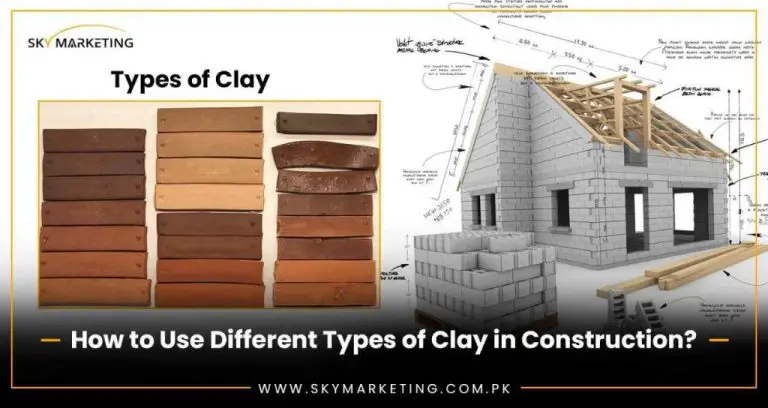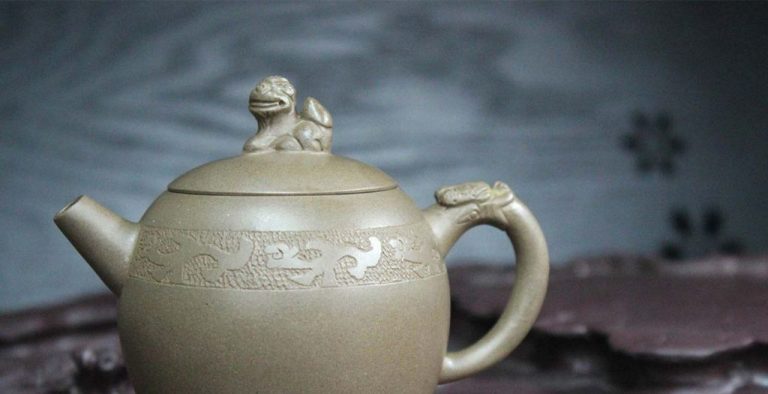What Are Two Items That Can Be Made Of Clay?
Clay is a versatile material that has been used for thousands of years to create both functional and decorative objects. The term “clay” refers to a naturally occurring material composed primarily of fine-grained minerals, typically silicate minerals like kaolin. Clay is plastic and malleable when wet, making it easy to shape into various forms. However, when fired at high temperatures, the clay undergoes permanent physical and chemical changes, becoming hard, durable, and non-plastic. This allows clay objects to maintain their shape. Throughout history, clay has been used to produce pottery, sculpture, bricks, tiles, tableware, jewelry, figurines, cookware, and more. The unique properties of clay make it an ideal material for crafting objects both beautiful and practical.
Pottery and Ceramics
One of the oldest uses of clay is for pottery and ceramics. For thousands of years, cultures around the world have shaped clay into useful and decorative objects. Pottery refers to objects made of earthenware, stoneware, or porcelain clay that have been fired in a kiln to harden them. Ceramics is a broader term encompassing all clay objects that have been transformed through heat, including pottery. Potters and ceramicists shape clay into vessels, plates, bowls, cups, and more using a potter’s wheel or by hand-building techniques. They decorate the clay before or after firing using glazes, paints, carving, or other methods. Ancient pottery artifacts provide insights into culture and history. Today, pottery and ceramics remain popular art forms and crafts, both functional and purely decorative.
Sculptures
Clay sculptures date back to ancient times. Clay is one of the oldest art mediums known to humans, with artifacts dating back over 20,000 years. Clay is an ideal material for sculpting as it can be easily shaped and molded into any form. It also hardens when fired, allowing the finished sculpture to retain its shape permanently.
Clay sculptures and figurines were prevalent across many ancient cultures including the Greeks, Romans, Chinese, Mayans, and Egyptians. These cultures fashioned clay sculptures of deities, animals, and representations of everyday life. The Terracotta Army of China is one of the most famous clay sculpture groups from ancient times, consisting of over 8,000 detailed clay soldiers.
Clay remains a popular material for sculptures today. Modern clay sculptures range from decorative pieces to avant-garde conceptual works. Contemporary clay sculptors experiment with scale from miniatures to monumental installations. They also utilize a variety of techniques including hand-building, wheel-throwing, and molding clay. From ancient artifacts to modern masterpieces, clay allows artists to give form to their creative visions.
Bricks
Clay bricks have been used in construction for thousands of years. They are one of the longest lasting and strongest building materials. Clay bricks are manufactured by mixing clay with water and then drying them into their brick shape before firing them in a kiln. The intense heat from the kiln hardens the clay into a durable ceramic material. Bricks made from clay are incredibly sturdy and weather resistant. They have compressive strength and low water absorption properties. Clay bricks do not rot, burn, or need frequent repairs and replacements like other building materials. They have a long lifespan and need little maintenance over the years. The durability and longevity of clay bricks have made them an integral part of buildings and structures for millennia.
Tiles
Clay is commonly used to create tiles for floors, walls, roofs, and other surfaces. The durability and malleability of clay makes it an ideal material for tiles.
Floor tiles made of clay come in a vast array of colors, shapes, and designs. Terracotta tiles are a popular type of clay floor tile known for their earthy red-orange hue. Quarry tiles are made from natural clay and fired at high temperatures, making them very hard and resistant to moisture, stains, and cracking. Decorative ceramic floor tiles allow for intricate patterns and images using colored glazes.
Clay is also used for wall tiles in kitchens, bathrooms, and other rooms. Glazed ceramic wall tiles are water-resistant and easy to clean. Subway tiles are a classic rectangular style that provides a seamless, sleek look. Modern styles mimic natural materials like stone, wood, and marble using clay.
On roofs, clay tiles have been used for centuries across many parts of the world. Their overlapping design allows rainwater to run off while providing protection from the elements. Clay roof tiles come in curved and flat shapes, with clay color options ranging from red and brown to gray.
In summary, clay’s versatility allows it to be formed into tiles for nearly any hard surface. Tiles made of clay are durable, available in countless styles, and add visual interest to both interiors and exteriors.
Tableware
Tableware is perhaps one of the most common types of items made from clay. Clay is an ideal material for plates, bowls, mugs, and other dinnerware due to its durability, heat resistance, and ability to be molded into various shapes and sizes. Ceramic tableware made from clay is an essential part of any kitchen.
Plates are a standard tableware item produced from clay. Clay plates provide a smooth, stable surface for serving food at the table. Bowls crafted from clay work well for soups, cereals, pastas, and more. The curved sides help contain liquids and foods. Clay mugs make excellent vessels for hot drinks like coffee, tea, and hot chocolate. The clay insulates to keep the beverage warm for longer.
Tableware made of clay comes in endless colors, patterns, and designs. It can be glazed, painted, or left in its natural terra cotta hue. Clay tableware has been made worldwide for thousands of years and continues to be a table setting staple today.
Jewelry
Clay is commonly used to create beads and pendants for jewelry. The process starts with shaping moist clay into the desired forms. These are then left to dry before firing them in a kiln, which hardens and sets the clay. Once fired, the pieces can be glazed or painted for decoration. Clay is a versatile material for jewelry-making. It can be molded into intricate shapes and designs. Fired clay is also durable, so clay beads and pendants can withstand daily wear. Natural clays come in a range of earthy colors like reds, browns, and tans. With glazes and pigments, jewelers can create vibrant hues on the finished pieces. The lightweight nature of fired clay beads makes them comfortable for wearing. Clay’s porosity provides an appealing texture that contrasts nicely with other jewelry materials like metal and gems. Overall, clay is an accessible, flexible, and attractive choice for making beads, pendants, and other jewelry components.
Figurines
Clay is commonly used to create figurines, miniatures, and small decorative objects. These detailed statuettes allow artists to capture everything from historical figures to pop culture characters in an intimate, tangible form. Clay’s malleable properties make it a versatile material for crafting life-like figures in action poses as well as still life tableaus. The figurines can capture minute facial expressions and clothing details when shaped by a skilled artisan.
Miniature clay figures are often used for tabletop gaming, model railroads, and dollhouses. Their small size allows collectors and hobbyists to curate expansive worlds in miniature. Historical wargames will often use clay or ceramic miniatures to represent soldiers, allowing players to visualize historic battles. Clay miniatures are also popular for model train layouts, creating tiny townspeople, animals, and scenery. Their handmade imperfections add organic warmth and character to the models. In many ways, the level of detail and artistry makes these figures just as valued for showpieces as they are for hobbies and games.
Clay figurines make for unique, customizable decor compared to mass manufactured items. Sculptors can capture the exact likeness of a pet, child, or loved one as a keepsake. Figurines depicting gods, goddesses, and mythological creatures remain popular collectibles passed down through generations. With clay’s versatility and artisans’ creativity, the possibilities are limitless for bringing mini worlds and characters to life through detailed statuettes.
Cookware
Clay is commonly used to make cookware due to its ability to withstand high temperatures. When fired at high heat, clay becomes ceramic which is an ideal material for baking, roasting, and cooking food. Some examples of clay cookware include:
Pots and pans – From sauté pans to stock pots, clay pots and pans have been used for cooking for thousands of years. Unglazed clay pots in particular are praised for their ability to cook food evenly and retain heat well. The natural non-stick surface also reduces the need for oil when cooking.
Tagines – Originating in North Africa, tagine cooking vessels have an iconic cone-shaped lid that collects and returns condensation to the dish. Clay tagines work well for braising meat and vegetable dishes. The moist cooking environment infuses food with lots of flavor.
Bakeware – Everything from pie dishes and casserole dishes to bread pans can be formed from clay. Ceramic bakeware withstands the high heat of ovens, broilers, and even campfires. Unlined clay surfaces can create a delightful crispy crust when baking.
So whether used for simmering stews or roasting vegetables, clay cookware is a versatile, traditional, and effective option for food preparation. The natural cooling properties and sturdy construction make clay pots and pans a smart choice.
Conclusion
When we look at items that can be created from clay, the range of possibilities is truly remarkable. From strong, durable bricks and tiles for construction, to delicate pottery, sculpture, and jewelry that allow creative expression, clay is an adaptable material able to be shaped with the hands into almost anything imaginable. Across cultures and throughout history, humans have recognized the versatility that clay provides, able to be molded while soft and then hardened to a permanent form through firing. Clay allows both artistry in sculpting and pottery, as well as practical use in dishes, cookware, and building materials. With countless options across so many categories, clay stands out for its flexibility and capacity to be crafted into beautiful as well as functional creations.


